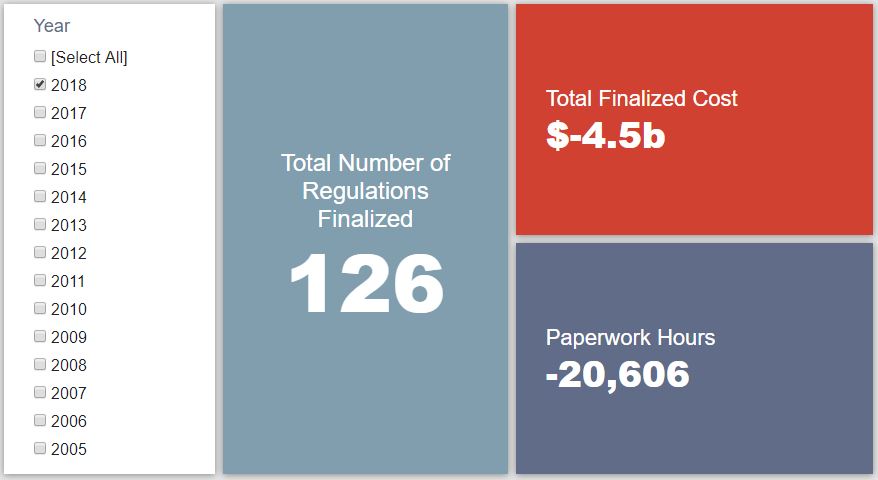Week in Regulation
June 18, 2018
An Active Week for Homeland Security
The Department of Homeland Security (DHS) took the lead in the world of rulemaking last week. The agency had the most notable regulatory action and the most notable deregulatory action of the week. Between both proposed and final rules, agencies published roughly $153.6 million in net costs and 426,672 hours of new paperwork. The per capita regulatory burden for 2018 is negative $13.81.
Regulatory Toplines
- New Proposed Rules: 50
- New Final Rules: 57
- 2018 Total Pages of Regulation: 27,921
- 2018 Final Rules: -$4.5 Billion
- 2018 Proposed Rules: $8.2 Billion
The DHS rule on “Air Cargo Advance Screening” establishes further protocols for when and how air carriers provide cargo data to DHS so that the agency can conduct a more thorough and timely security assessment. These additional requirements could cost industry roughly $204 million over the next decade. While clearly a significant regulatory action, DHS considers it exempt from the purview of Executive Order (EO) 13,771 due to its national security implications.
Tracking Regulatory Modernization
The notable deregulatory action out of DHS comes in a Coast Guard proposal on “Amendments to the Marine Radar Observer Refresher Training Regulations.” The proposed rule would update certain marine merchant credentialing requirements, saving affected operators nearly $68 million over the next decade or roughly $5.5 million on an annualized basis. However, since it is still in the proposed rule stage, these savings do not yet accrue to the EO 13,771 regulatory budget.
There was one deregulatory action adding to the EO 13,771 ledger last week. The Department of Transportation (DOT) finalized a rule regarding a “Process for Department of Veterans Affairs (VA) Physicians To Be Added to the National Registry of Certified Medical Examiners.” As the title suggests, this rule would let duly certified VA medical personnel attain the proper certification to serve as medical examiners of commercial vehicle drivers under a streamlined licensing process. DOT estimates that this could save affected personnel $147,000 annually due to “reduced tuition costs and travel time and expenses.”
According to AAF analysis, since the start of FY 2018 (beginning Oct. 1, 2017), executive agencies have promulgated 40 deregulatory actions with quantified estimates against five regulatory measures that impose costs, under the rubric created by EO 13,771 and the administration’s subsequent guidance document on the matter. These rules combine for net annual savings of roughly $1.2 billion. This means that agencies have thus far surpassed the administration’s cumulative goal for FY 2018 of $687 million in net annual savings. In fact, according to the administration’s latest Unified Agenda, agencies are on track to roughly double that goal.
Click here to view AAF’s examination of the administration’s progress under the “one-in, two-out” executive order through the end of Fiscal Year 2017.
State of Major Obama-Era Initiatives
Based on total lifetime costs of the regulations, the Affordable Care Act has imposed costs of $52.9 billion in final state and private-sector burdens and 176.9 million annual paperwork hours.
Since passage, the Dodd-Frank financial reform legislation has produced more than 82.9 million final paperwork burden hours and imposed $38.9 billion in direct compliance costs.
Total Burdens
Since January 1, the federal government has published $3.7 billion in net costs (despite $4.5 billion in net savings from final rules) and new paperwork burdens amounting to 2.1 million hours (however, this includes 20,606 hours cut under final rules). Click here for the latest Reg Rodeo findings.











